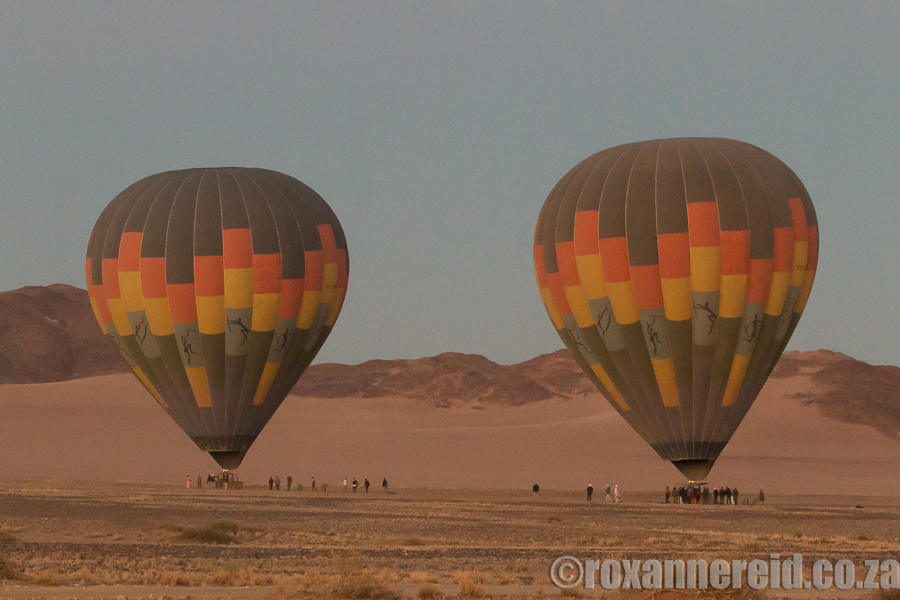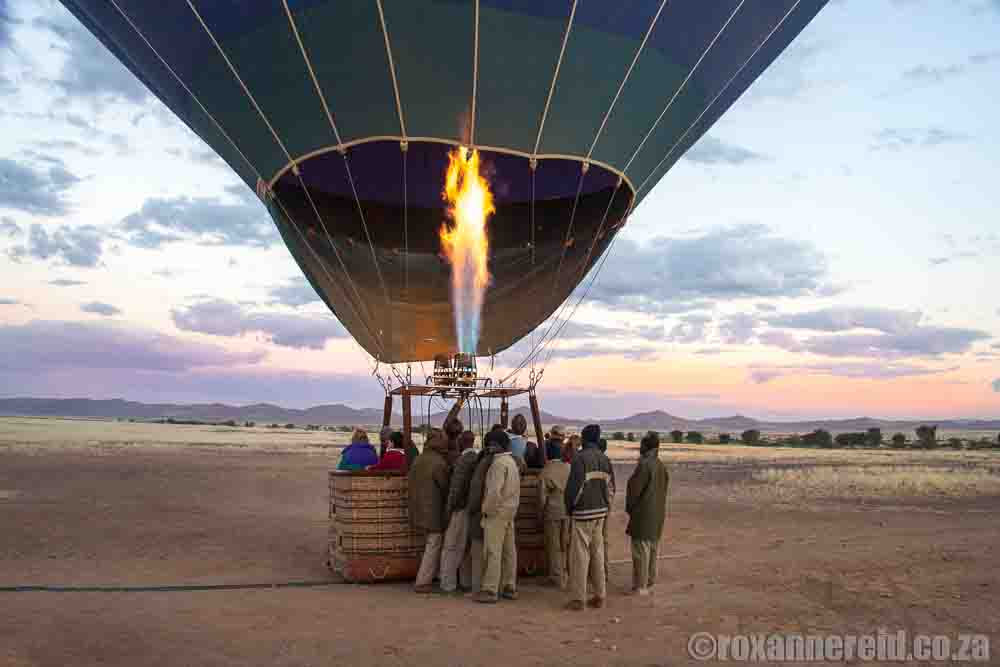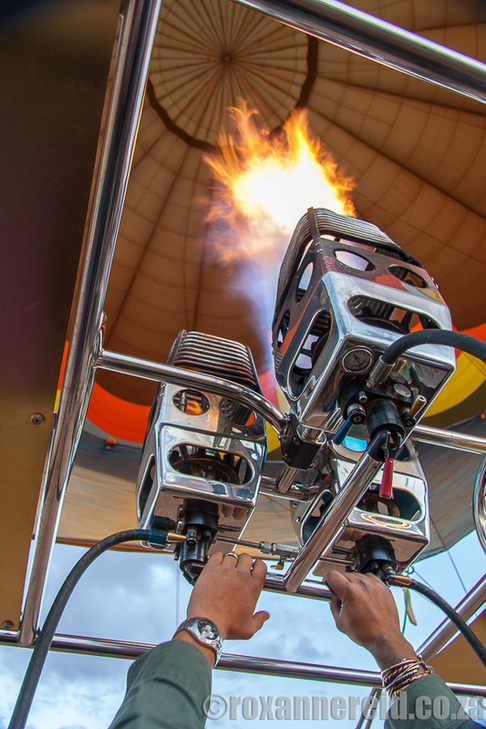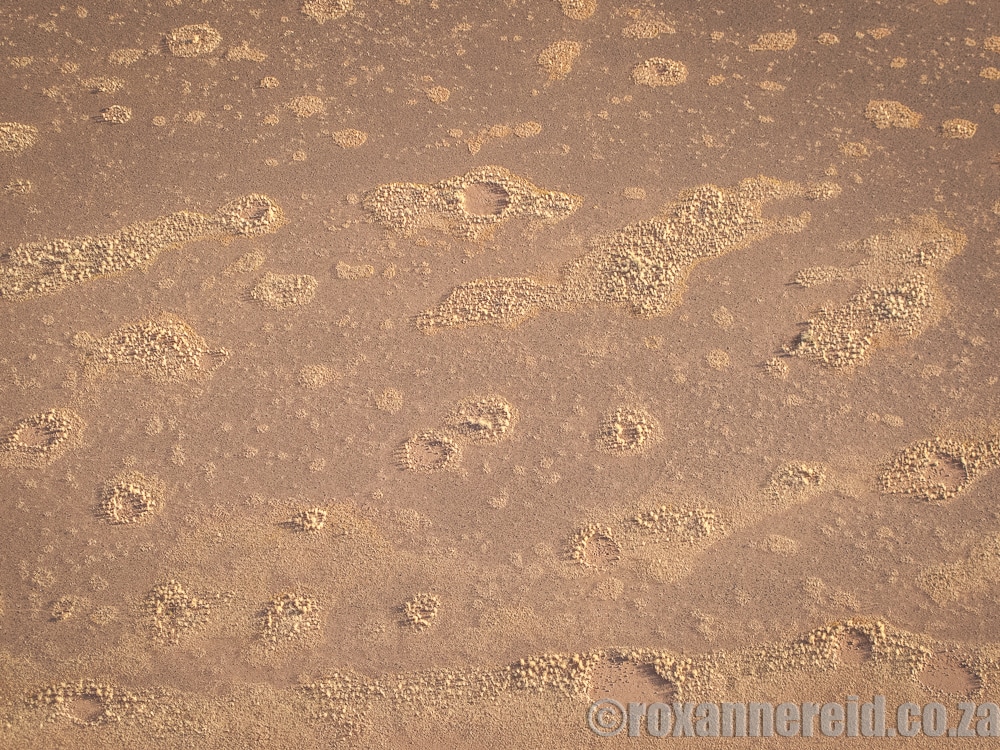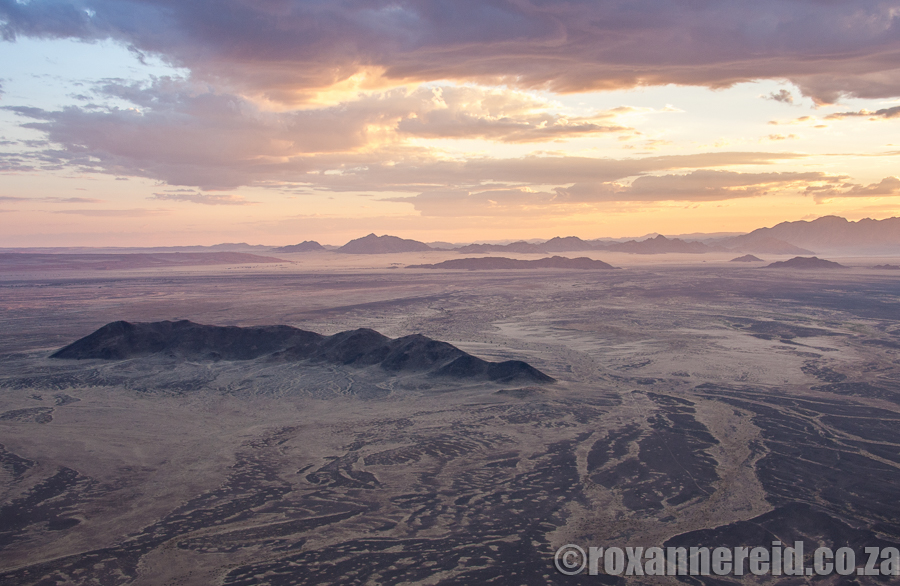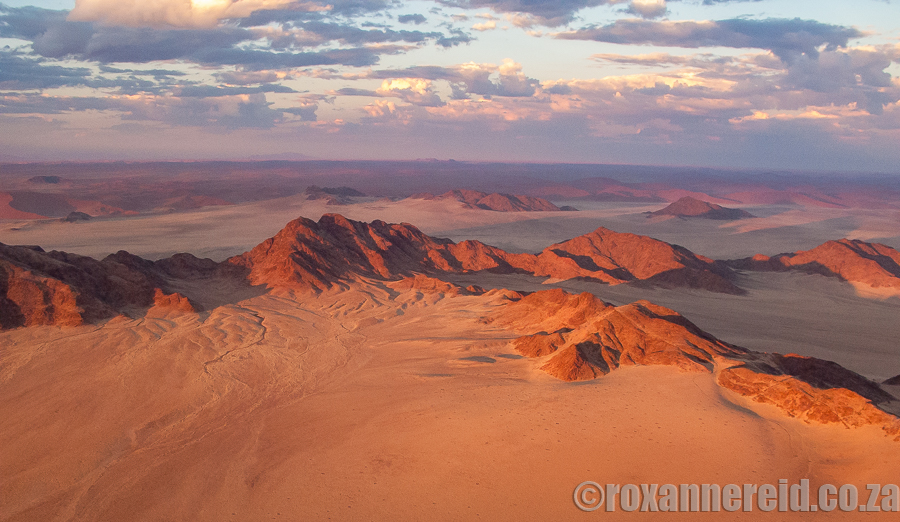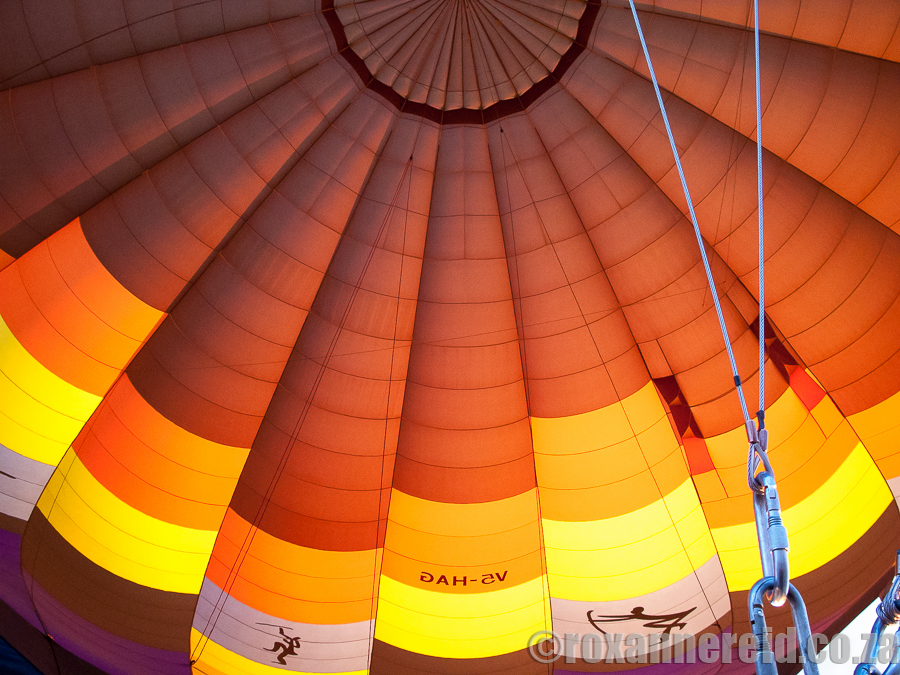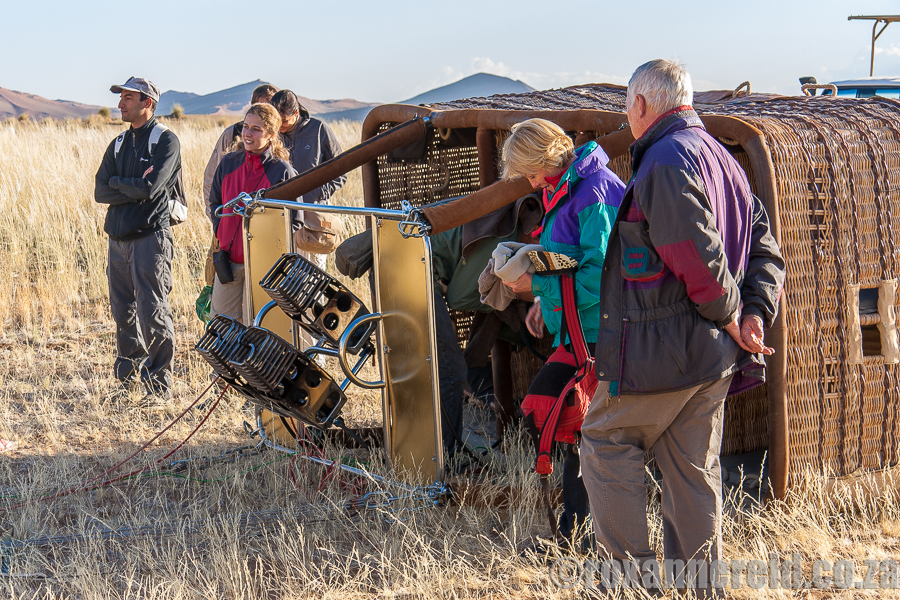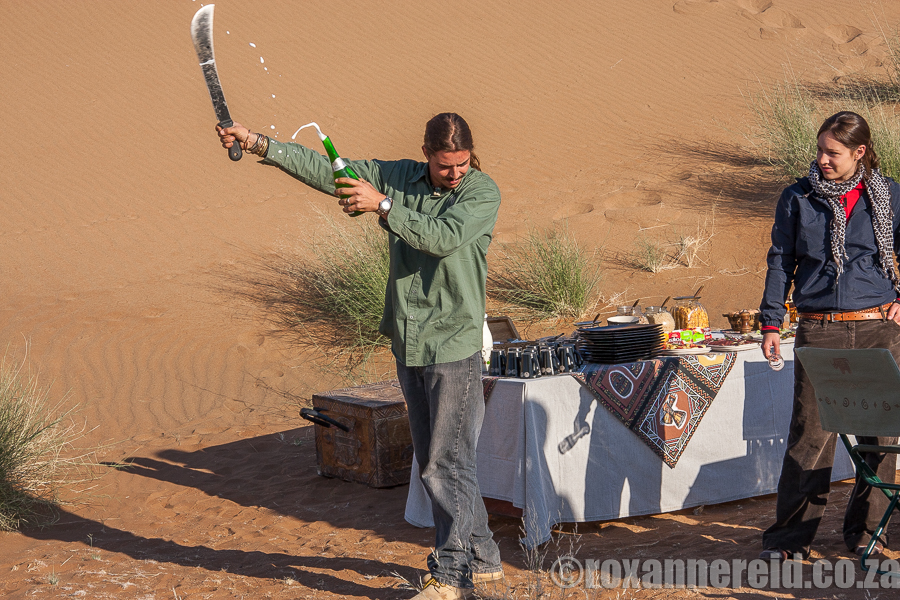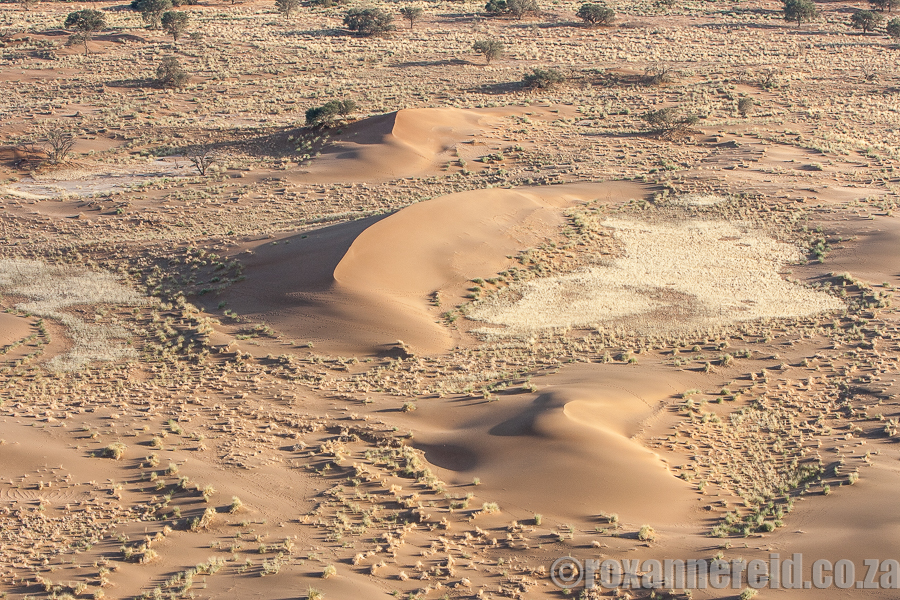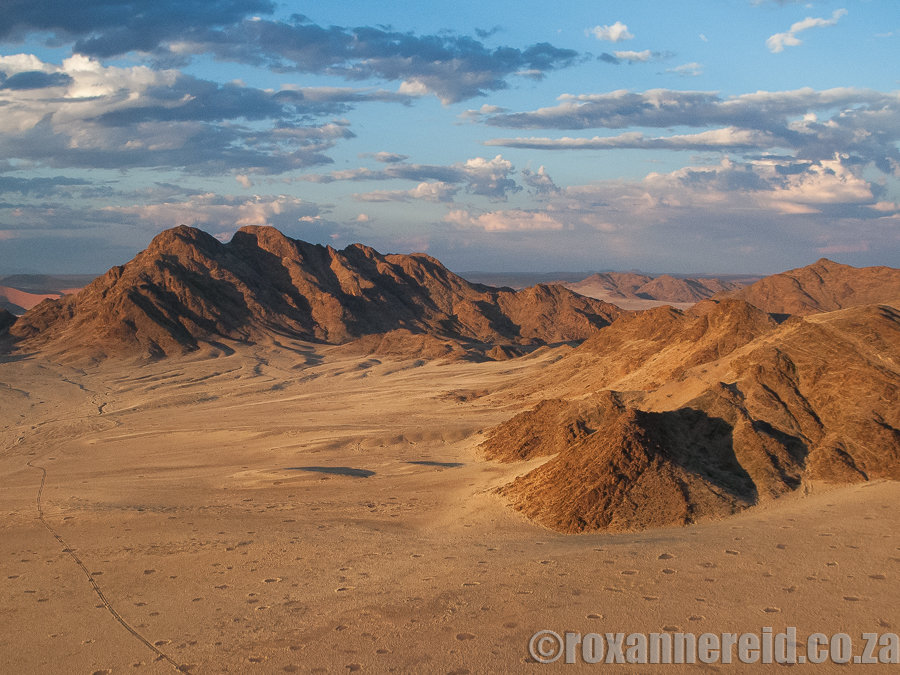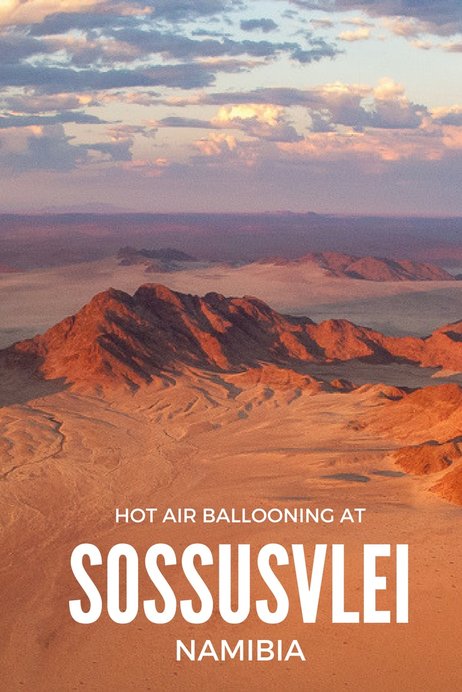Image may be NSFW.
Clik here to view.
Clik here to view.
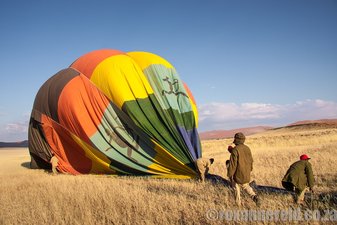
By Roxanne Reid
It was cold there in the desert before dawn, our lips blue, noses pinched. But we didn’t mind. Wrapped in warm jackets and beanies, we were about to soar in a hot air balloon over Sossusvlei in Namibia in time to see the sun rise over the dunes.
It was cold there in the desert before dawn, our lips blue, noses pinched. But we didn’t mind. Wrapped in warm jackets and beanies, we were about to soar in a hot air balloon over Sossusvlei in Namibia in time to see the sun rise over the dunes.
After a 05:30 pickup and bone-rattling ride in an old Uri to the launch site near Kulala Desert Lodge on the Kulala Wilderness Reserve, we found our pilot Denis already in the basket and puffing flames into a fully inflated balloon. We’d seen it from far off in this flat landscape, slowly inflating from a pinprick to a massive yellow and orange balloon, the tiny basket underneath like a forgotten trinket.
It takes seven guys about 35 minutes to unpack, unfold and inflate the balloon with butane gas, so they’d already been at it while we were stomping our feet to warm them, our breath smoky in the cold morning air. The gas flame heats the air inside the balloon so it’s hotter than the air outside, and that’s what gives it lift.
It takes seven guys about 35 minutes to unpack, unfold and inflate the balloon with butane gas, so they’d already been at it while we were stomping our feet to warm them, our breath smoky in the cold morning air. The gas flame heats the air inside the balloon so it’s hotter than the air outside, and that’s what gives it lift.
Our Namib Sky Balloon Safaris balloon would be carrying ten people plus the pilot. Apart from the four of us there was a honeymoon couple – she Sicilian and he from Guinea – now living in London, a very young and shy Brit couple, and a European couple living in Mozambique where she worked for the UN.
We clambered aboard while a team of Namibians held the basket down, grinning broadly in the dawn chill. The sun wasn’t up yet but pink shards of light were fingering their way into the sky between the clouds and the dunes.
We clambered aboard while a team of Namibians held the basket down, grinning broadly in the dawn chill. The sun wasn’t up yet but pink shards of light were fingering their way into the sky between the clouds and the dunes.
Denis gave us a safety briefing and prepared us for two types of landing. The first was the calm landing if there was no wind at ground level. If there was wind, we’d have the second kind of touchdown, which he called a ‘sports landing’.
‘For the first I’ll just ask you to bend your knees to absorb the shock of the landing,’ he said. ‘For the second you need to squat down with your backs to the front of the balloon, brace against the padded cushions and hold onto the rope loops provided. Understand?’
We nodded and murmured assent. The shy British couple looked scared, almost as if they were rethinking their madness in being here at all. I was secretly hoping for a sports landing, which sounded far more exciting, an adventure to brag about back home.
‘For the first I’ll just ask you to bend your knees to absorb the shock of the landing,’ he said. ‘For the second you need to squat down with your backs to the front of the balloon, brace against the padded cushions and hold onto the rope loops provided. Understand?’
We nodded and murmured assent. The shy British couple looked scared, almost as if they were rethinking their madness in being here at all. I was secretly hoping for a sports landing, which sounded far more exciting, an adventure to brag about back home.
A few bursts of flame into the balloon startled us, both with the noise and the ferocity of heat on the top of our heads, on our faces as we looked up. There’s a so-called ‘whisper mode’ if you’re floating over wildlife, but it’s still pretty loud and would startle me if I was a wildebeest or gemsbok who had never heard a hot air balloon before. It was a shock to find that hot-air ballooning wasn’t quite as silent as I’d imagined.
Then without fanfare we were up and off the ground. There was no sense of lift-off, we just suddenly found ourselves looking down on the tops of the heads of the men who a moment before had been standing next to us and holding the balloon down.
It was like being inside a dream, flying above the land and seeing everything from above, no plane window or wing breaking your view.
Then without fanfare we were up and off the ground. There was no sense of lift-off, we just suddenly found ourselves looking down on the tops of the heads of the men who a moment before had been standing next to us and holding the balloon down.
It was like being inside a dream, flying above the land and seeing everything from above, no plane window or wing breaking your view.
Light, fairy circles and wildlife
The first joy was the light. Bright red, orange, yellow, pink and lavender romped among the clouds as the sun came up over the far mountains. It was a surprise to be surrounded by mountains in what you tend to think of as a flat desert country. On one side red dunes with a thin veneer of grass, on the other a stony black mountain rich in magnetite; faintly mauve flat-topped mountains in the distance, surrounding a golden plain below.
The first joy was the light. Bright red, orange, yellow, pink and lavender romped among the clouds as the sun came up over the far mountains. It was a surprise to be surrounded by mountains in what you tend to think of as a flat desert country. On one side red dunes with a thin veneer of grass, on the other a stony black mountain rich in magnetite; faintly mauve flat-topped mountains in the distance, surrounding a golden plain below.
The next joy was floating over fairy circles – those baffling bare circles in the sand of the Namib Desert. Nothing seems to survive inside these perfect circles, faint in dry times but standing out more clearly in contrast to the grass cover after good rains.
Theories about their origin vary from to soil poisoning by euphorbia plants, to fungi, meteor showers, burrowing animals and – perhaps most likely – a chemical shed by termites. Of course, if you’re a bit kooky you may say they’re evidence of UFO landings, but for my money there’s no better way of thinking of them than as ‘fairy’ circles. Hundreds of them of various sizes made the land look like the surface of the moon.
Theories about their origin vary from to soil poisoning by euphorbia plants, to fungi, meteor showers, burrowing animals and – perhaps most likely – a chemical shed by termites. Of course, if you’re a bit kooky you may say they’re evidence of UFO landings, but for my money there’s no better way of thinking of them than as ‘fairy’ circles. Hundreds of them of various sizes made the land look like the surface of the moon.
For me this experience was about flying high over a beautiful landscape in a country I love. I wasn’t expecting much of a Serengeti-style safari, so it was a bonus to glide above some gemsbok and springbok casting long skinny shadows in the early morning sunlight. So tiny we nearly missed it was a black-backed jackal trotting out to look for breakfast. Ostriches strode the dunes with a bunch of little fluff balls in their wake, showing off their breeding success. We had to take Denis’s word that there are also hyena and leopard in the area.
He did a 360-degree turn so we all got a chance to look at the rising sun. Then we just drifted with the wind. We learnt that a pilot can’t steer a balloon; it just goes at the same speed as the wind. All the pilot can do is work his burners to control the altitude while he finds a wind channel going in the general direction he’d like to travel.
I’d never really understood why hot weather wasn’t good flying weather. But it’s simple: in hot weather it’s hard to maintain the temperature difference between outside the balloon and inside. Since that’s what gives you lift, you aren’t going anywhere but down when the external air gets too hot.
I’d never really understood why hot weather wasn’t good flying weather. But it’s simple: in hot weather it’s hard to maintain the temperature difference between outside the balloon and inside. Since that’s what gives you lift, you aren’t going anywhere but down when the external air gets too hot.
Back on the ground
We’d only just got used to being suspended in the sky when the pilot was on the radio talking about where to land, what the wind conditions were like and where the ground crew should position themselves to run and catch the basket before it took off again. An hour was too short, just long enough to discover how heavenly it feels to have the whole world laid at your feet yet near enough to see details like little ostrich chicks.
But with only an extra 30 minutes of fuel for emergencies, I did understand why we started towards the dune that would be our landing point. As we came in we could see the ground team gathered to catch and anchor us, a breakfast table spread with goodies sheltering on the other side of the dune.
We’d only just got used to being suspended in the sky when the pilot was on the radio talking about where to land, what the wind conditions were like and where the ground crew should position themselves to run and catch the basket before it took off again. An hour was too short, just long enough to discover how heavenly it feels to have the whole world laid at your feet yet near enough to see details like little ostrich chicks.
But with only an extra 30 minutes of fuel for emergencies, I did understand why we started towards the dune that would be our landing point. As we came in we could see the ground team gathered to catch and anchor us, a breakfast table spread with goodies sheltering on the other side of the dune.
The landing
At first Denis thought it would be a textbook calm landing. But as we approached the ground a mischievous little wind picked up and he ordered us to brace for the sports landing. We did. It wasn’t too bad, not much more than a big bump.
Thinking it was all over, a few of the travellers started to get up, but Denis told us to stay down. We soon saw why. The huge balloon had collapsed forward and a gust of wind picked it up and dragged it, so the basket with us inside tipped over and we landed on our backs. That was a small thrill and a totally relaxing way to end our flight.
At first Denis thought it would be a textbook calm landing. But as we approached the ground a mischievous little wind picked up and he ordered us to brace for the sports landing. We did. It wasn’t too bad, not much more than a big bump.
Thinking it was all over, a few of the travellers started to get up, but Denis told us to stay down. We soon saw why. The huge balloon had collapsed forward and a gust of wind picked it up and dragged it, so the basket with us inside tipped over and we landed on our backs. That was a small thrill and a totally relaxing way to end our flight.
Once the balloon had been secured we scrambled out. As the men began to repack it we piled back into the Uri for the trip around Brown Dune to where the tables had been set up for breakfast.
‘Welcome to the biggest restaurant in the world,’ said Denis. An almost 360-degree view of Sossusvlei dunes and not another soul in sight. Magic.
‘Welcome to the biggest restaurant in the world,’ said Denis. An almost 360-degree view of Sossusvlei dunes and not another soul in sight. Magic.
Breakfast was a feast of champagne – which Denis opened with the appropriate sabre rattling hoopla – cold venison, smoked salmon, cheese, homemade bread, fruit kebabs, pancakes and freshly made croissants. By now the desert air had warmed up so we no longer needed our jackets or beanies, even in the middle of winter. Winter in Namibia is like that – it moves from freezing nights to sweltering days in the blink of an eye.
The food was good but if you’d given me a choice I’d happily have gone hungry and spent an extra half hour in the air instead.
The food was good but if you’d given me a choice I’d happily have gone hungry and spent an extra half hour in the air instead.
The cost – and why it’s worth it
A balloon this big costs ‘about as much as a brand new Mercedes’ and it will give only about 700 hours of flying time. It takes about 200 litres of butane per hour to fly and each balloon carries enough for 90 minutes, allowing an extra 30 minutes spare in case of emergency.
So it’s not a cheap pastime and the cost of a ticket to fly reflects that at around N$5950/ZAR5950 per person (May 2017 prices). Obviously it’s less of a big deal for anyone with US dollars (it converts to about US$450), pounds or euros, but a huge stretch for Namibians and South Africans.
A balloon this big costs ‘about as much as a brand new Mercedes’ and it will give only about 700 hours of flying time. It takes about 200 litres of butane per hour to fly and each balloon carries enough for 90 minutes, allowing an extra 30 minutes spare in case of emergency.
So it’s not a cheap pastime and the cost of a ticket to fly reflects that at around N$5950/ZAR5950 per person (May 2017 prices). Obviously it’s less of a big deal for anyone with US dollars (it converts to about US$450), pounds or euros, but a huge stretch for Namibians and South Africans.
But let me tell you now that if you can beg, borrow or steal the money somehow, it will buy you the experience of a lifetime, one you’ll replay in your mind over and over for years to come.
You’ll take to the skies as the sun rises over the world’s oldest desert. You’ll float over a wind-swept sea of sand in one of the world’s most spectacular landscapes. You’ll enjoy the play of early dawn light over the mountains, see fairy circles and wildlife. You’ll know dreams can come true. And you’ll never forget the majesty of Sossusvlei from a unique perspective.
Did you enjoy the article? Pin this image!
You’ll take to the skies as the sun rises over the world’s oldest desert. You’ll float over a wind-swept sea of sand in one of the world’s most spectacular landscapes. You’ll enjoy the play of early dawn light over the mountains, see fairy circles and wildlife. You’ll know dreams can come true. And you’ll never forget the majesty of Sossusvlei from a unique perspective.
Did you enjoy the article? Pin this image!
You may also enjoy:
Climbing the dunes of Sossusvlei, Namibia
Sunset drive from Little Kulala, Sossusvlei
Copyright © Roxanne Reid - No words or photographs on this site may be used without permission from roxannereid.co.za
Climbing the dunes of Sossusvlei, Namibia
Sunset drive from Little Kulala, Sossusvlei
Copyright © Roxanne Reid - No words or photographs on this site may be used without permission from roxannereid.co.za
